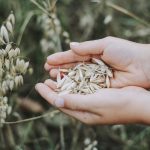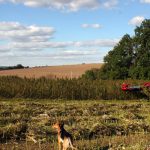
Vineyard planting authorizations
Introduction
The wine sector in Spain is very important. It is the country with the largest planted vineyard surface area in the world, and the third largest wine producing country in the world (after Italy and France), with more than 4,000 wineries producing around 40 million hectolitres per year. Despite this large area of vineyards, it is not legal for anyone to plant this crop wherever they want, but there is a regulation by the European Union.
In order to avoid the risk of oversupply of wine products and the devaluation of protected designations of origin, the European Union has drawn up a regulation that controls the production of wine on its territory. This regulation is Regulation (EU) No 1308/2013 of the European Parliament and of the Council of 17 December 2013 establishing the common organisation of the markets in agricultural products and repealing Regulations (EEC) No 922/72, (EEC) No 234/79, (EC) No 1037/2001 and (EC) No 1234/2007. According to this Regulation, Member States shall make available, each year, authorisations for new plantings corresponding to 1 % of the total area actually planted with vines in their territory, calculated on 31 July of the previous year.
Spain adapts its legislation to this Regulation through Royal Decree 1338/2018 of 29 October, which regulates wine production potential, and will apply to vineyards intended for the production of wine grapes in all its autonomous communities with the exception of the Canary Islands until 31 December 2030.
This regulation defines “New Planting” as plantations for which authorisation is granted according to the percentage of the area planted with vines on 31 July of the previous year, which is made available annually in accordance with European legislation. In addition, the national regulations set out the type of grape authorised for planting in each Autonomous Community.
Areas whose vines are intended for experimental purposes or for the cultivation of graft nurseries shall not require authorisation, but the grapes produced on such areas and the wine products obtained in both cases may not be marketed during the periods during which the experiment or the period of production of graft nurseries takes place.
Each year the Ministry responsible for agriculture shall fix the area which may be granted for authorisations for new plantings. This area must be more than 0 % and not more than 1 % at national level of the area planted with vines on 31 July of the previous year and must be fixed before 30 December. In the defined geographical area of a protected designation of origin, the area available for authorisations may be limited but not prohibited.
In determining these areas, the Ministry must take into account the state of the market, the expected impact of the new production areas and the planting rights and authorisations granted but not yet exercised. The recommendations of the representative professional organisations should also be taken into account.
As regards penalties, producers who do not use the authorisation granted to them during its period of validity will be subject to the system of penalties laid down in Law 24/2003, of 10 July, on Vines and Wine, and in regional legislation, without prejudice to any civil, criminal or other liabilities that may arise. These penalties shall not apply in the cases set out in article 64.2 of Regulation (EU) No. 1306/2013, nor when what has not been used during its period of validity is less than 10%, up to a maximum of 0.2 hectares.
Failure to comply with the essential conditions of the authorisation granted will determine the suspension of its effects or its revocation, and the situation must be restored to the moment prior to its granting.
Types of authorisations
There are three types of authorisations:
– Authorisations for new planting
– Authorisations for replanting
– Authorisations for early replanting
All authorisations granted shall be valid for a maximum period of three years from the date of notification of the decision on the application for authorisation. The period of validity may in no case exceed 31 December 2030.
Authorisations for new planting
For an application to be considered admissible, the applicant must meet the following requirements:
– Have the agricultural area for which he/she is applying for authorisation in the autonomous community to be planted, in order to be able to carry out a vineyard plantation, from the date of the opening of the deadline for applications until the time of the communication of the plantation.
– Have the appropriate professional capacity and competence.
– Not have any vineyard plantations without authorisation or without the right to plant, at the date of the opening of the application period and at the time the authorisation is granted.
Applications must be submitted between 15 January and the last day of February each year. They must indicate the area requested and the specific location of the area for which authorisation is requested. They will be examined by the Autonomous Communities according to the eligibility criteria. At the end of the period for submitting applications, they will notify applicants whose applications have been excluded because they do not meet these criteria of a decision stating the reasons for the rejection.
The granting of authorisations for new plantings shall take into account a maximum limit of 5 hectares of eligible area per applicant at national level. This limit shall be lower in the case of Protected Designations of Origin.
Once the vineyard plantation has been executed, the applicant must inform the competent authority within the period established by the Autonomous Community in which the plantation has been carried out, and always before the authorisation expires.
Once the plantation has been planted, it must remain in operation for at least 5 years and may not be sold or leased to another natural or legal person.
Authorisations for replanting
In order to replant a grubbed-up vineyard, a replanting authorisation must be obtained. In order to obtain authorisation, grubbed-up plantings must be authorised.
After the relevant checks have been carried out, the competent authority will issue a grubbing-up authorisation. Once the grubbing-up has been carried out by the winegrower, it must be communicated to the competent authority, which will issue a grubbing-up decision, after verification in the field.
The grubbing-up application by the vine-grower and the notification of the grubbing-up decision by the Autonomous Community shall take place in the same wine year.
The authorisations granted shall correspond to the equivalent of the area grubbed up in pure crop.
Once the vineyard has been planted, the applicant must notify the competent authority within the deadline set by the Autonomous Community in which the planting has taken place, before the authorisation expires.
The application shall be submitted before the end of the second wine year following the wine year in which the grubbing-up decision was notified. If the authorisation for replanting is not applied for after this period, the right to apply for authorisation shall be lost.
Authorisations for early replanting
The winegrower must undertake to grub up the vines corresponding to the planting carried out. This undertaking must be accompanied by a guarantee in the form of a bank guarantee, surety insurance, cash payment or other financial guarantee. The Autonomous Communities will establish the value of this guarantee, which must take into account the amount of the new planting to be carried out and the amount of the planting to be grubbed up. Failure to comply with the grubbing-up obligation by the deadline will entail the forfeiture of the guarantee, as well as the penalties established.
In addition, the winegrower must justify the right to grub up the vineyard.
The applicant must have the agricultural area for which he is applying for authorisation to replant in advance as his own property, or under a lease, sharecropping or any other form that he can prove. The verification of the area disposition shall be carried out during the submission of the application and during the notification of the planting to be made by the applicant.






